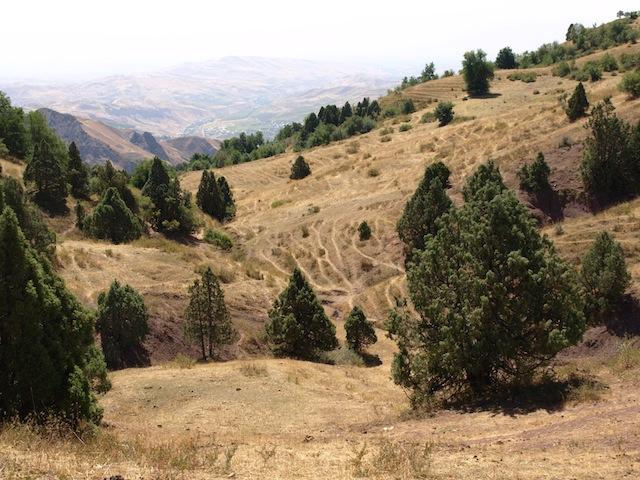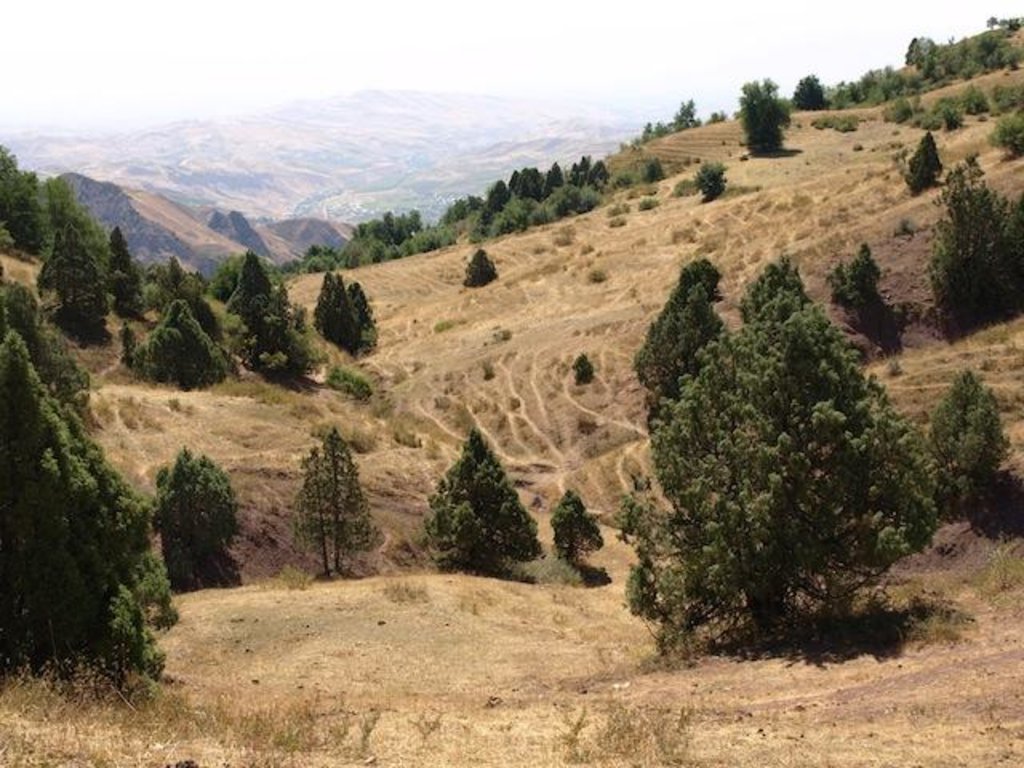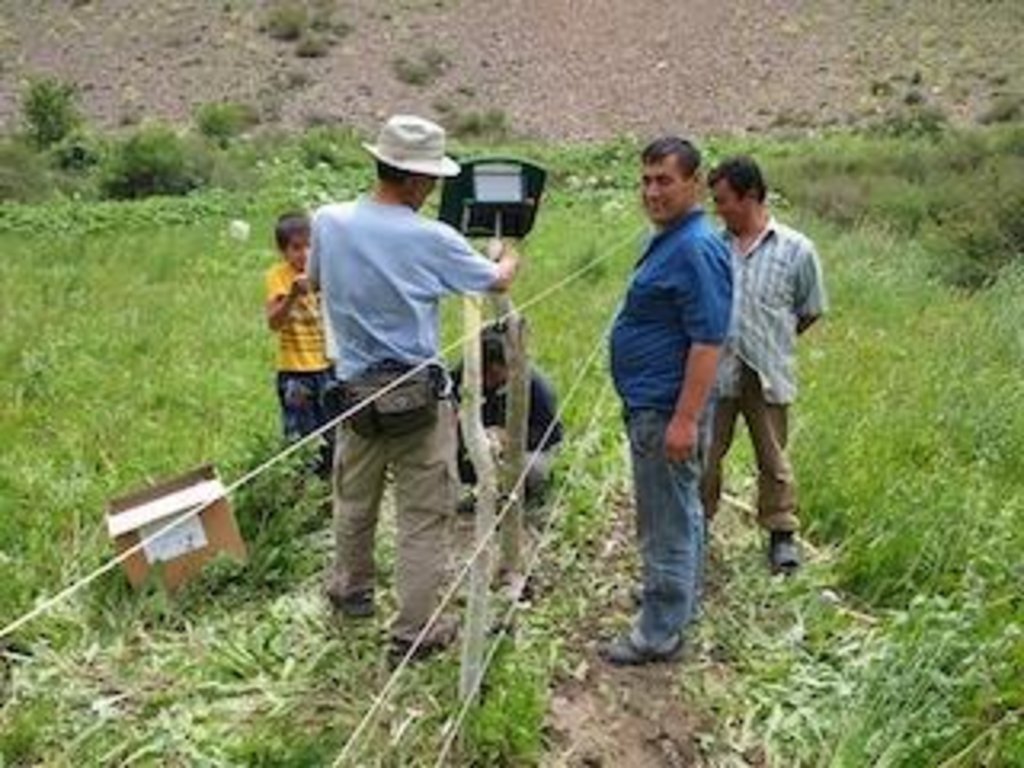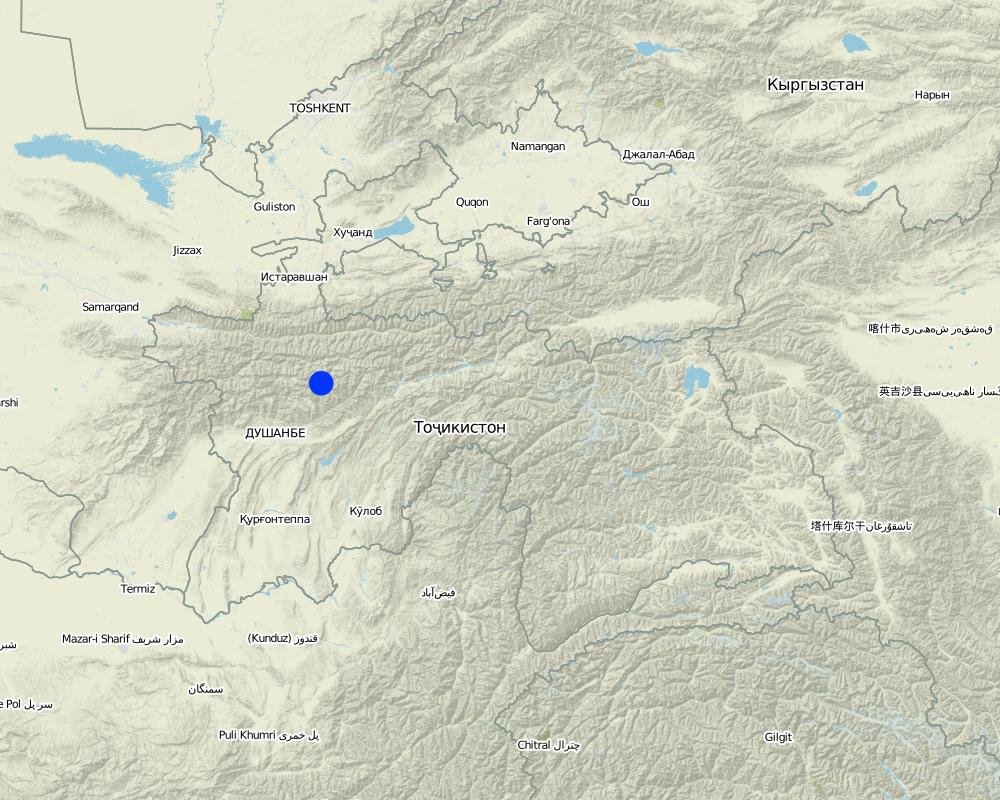Sustainable managements on pasture and forest lands based on natural regeneration by electrified fences [Tadjikistan]
- Création :
- Mise à jour :
- Compilateur : Kakubari Yochitaka
- Rédacteur : –
- Examinateur : David Streiff
approaches_2451 - Tadjikistan
Voir les sections
Développer tout Réduire tout1. Informations générales
1.2 Coordonnées des personnes-ressources et des institutions impliquées dans l'évaluation et la documentation de l'Approche
Spécialiste GDT:
Aidov Madibron
SFA
Russie
Spécialiste GDT:
Kumalova Rina
FRI
Russie
translator/assistant:
Shoh Sharipov
Russie
Nom du ou des institutions qui ont facilité la documentation/ l'évaluation de l'Approche (si pertinent)
Shizuoka University - Japon1.3 Conditions relatives à l'utilisation par WOCAT des données documentées
Quand les données ont-elles été compilées (sur le terrain)?
11/06/2011
Le compilateur et la(les) personne(s) ressource(s) acceptent les conditions relatives à l'utilisation par WOCAT des données documentées:
Oui
1.4 Références au(x) questionnaire(s) sur les Technologies de GDT
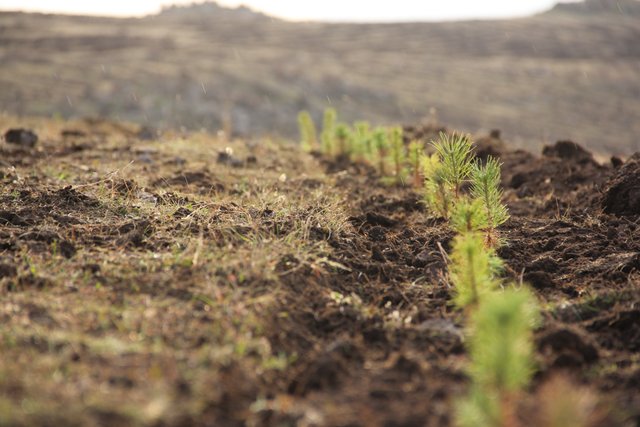
High-altitude afforestation for erosion control [Arménie]
Afforestation is a key technologies to protect soil against erosion and provide a wide range of ecosystem services. In this case, afforestation at high altitudes, which is particularly challenging, with the primary purpose of erosion control were planted in small patches with different methods. They form the basis for future …
- Compilateur : Hanns Kirchmeir
2. Description de l'Approche de GDT
2.1 Courte description de l'Approche
Sustainable managements on pasture and forest lands based on natural regeneration by electrified fences
2.2 Description détaillée de l'Approche
Description détaillée de l'Approche:
Aims / objectives: The aim is to avoid any animals grazing in the targeted areas by establishing electrified fences around the areas, conserving natural conditions of pasture and forestry lands, strengthening the communities’ incomes growth, and planting trees resilient to climate change, thereby contributing to maintaining soil of the areas healthy.
Methods: The project facilitated the following activities: Setting electrified fences that are generated by solar power, strengthening the regeneration of natural forest tree, planting fruiting trees for their sustainable incomes, planting trees such as juniper, pine, poplar, willow, among others. Planting Rosa canina in side of fence and R.C. grown up 2 meter height a few years later and functions as a natural fence. Electrified fence is moved to other site. Also, the project was heavily involved with farmer participation for the planning, fundraising, and implementation with farmers’ initiative.
Stages of implementation: 1. Awareness raising, 2. On the job training, 3. management activity planning, 4. Implementation, 5. Monitoring, 6. Readjustment based on results, 7. Further replication in new area.
Role of stakeholders: The Project had a leading role in initiation, orientation, awareness raising, mobilization, training, consultancy, input provision and mediation of communication. The local farmers have been actively participating, have provided labor input / financial contribution, provided indigenous knowledge and skills. Local authorities - providing land titles, participation in planning and decision making process. There are 5 households involved with in this project. The two Tajik communities (Duoba in Hisor and Kumarg in Ayni), each of which is consisting of 35 members. The members of all households took part in discussion rounds and training. Women: farmers came to the discussions together with their wives in certain level; the women took part in training, in implementing almost all of the adoption measures, and equally benefited from the project. However, they were not involved in decision making.
2.3 Photos de l'approche
2.5 Pays/ région/ lieux où l'Approche a été appliquée
Pays:
Tadjikistan
Région/ Etat/ Province:
Tajikistan
Autres spécifications du lieu :
Hisor/ Ayni
Map
×2.6 Dates de début et de fin de l'Approche
Indiquez l'année de démarrage:
2009
Date (année) de fin de l'Approche (si l'Approche n'est plus appliquée):
2012
Commentaires:
We have performed to collect about various ecological disasters in Tajikistan since Sep.2009, and over 75 base line research sites are done by Japanese Society of Promotion for Science (JSPS). Japanese International Cooperation Agency (JICA) supported us. Research title is as follow; Reforestation and forestation in aim of reduction of generation of greenhouse gases and lessening of global warming
2.7 Type d'Approche
- fondé sur un projet/ programme
2.8 Principaux objectifs de l'Approche
The Approach focused mainly on SLM with other activities (natural regeneration, pasture management, protecting fruits trees, strengthening community incomes, resilient to climate change )
The aim is to avoid any animals grazing in the targeted areas by establishing electrified fences around the areas, conserving natural conditions of pasture and forestry lands, strengthening the communities’ incomes growth, and planting trees resilient to climate change, thereby contributing to maintaining soil of the areas healthy.
The SLM Approach addressed the following problems: Lack of land tenure rights implementation. Nominal state farm reorganization. Low agricultural production - lands depleted of nutrients, very low yields, no crop rotation, all of which have led heavy concentration on overgrazing by domestic cattle. Soil degradation particularly by heavy precipitation and gully formation. Lack of technical knowledge and awareness of soil & water conservation measures. Lack of cash to invest in development of land - just limited capacity to invest but need external financial input. Poverty - underlying cause of general lack of potential to invest in development.
2.9 Conditions favorisant ou entravant la mise en œuvre de la(des) Technologie(s) appliquée(s) sous l'Approche
disponibilité/ accès aux ressources et services financiers
- entrave
Lack of land tenure rights implementation. Nominal state farm reorganization. Low agricultural production - lands depleted of nutrients, very low yields, no crop rotation, all of which have led heavy concentration on overgrazing by domestic cattle. Soil d
Treatment through the SLM Approach: 1) The project was mainly supported by Japan Society for Promotion of Science and Japan International Cooperation Agency with some portion of Tajik government’s sources. However, the inputs (poles and wires) are almost fully available on the local market
cadre institutionnel
- entrave
1) The project was mainly supported by Japan Society for Promotion of Science and Japan International Cooperation Agency with some portion of Tajik government’s sources. However, the inputs (poles and wires) are almost fully available on the local market
Treatment through the SLM Approach: Knowledge and technologies are shared with S.F.A. in Dushanbe when necessary. By coordinating with S.F.A., the project obtained the right to use the land for planting. As well, local offices of State Forest Agency and local authorities and communities are
cadre juridique (régime foncier, droits d'utilisation des terres et de l'eau)
- favorise
The existing land ownership, land use rights / water rights helped a little the approach implementation: I think it is very serious relationship between Land user ship and local citizens. and forest code is not coming enter on current datum. I think it is very important to be managed by new forest code.
- entrave
Implementing the land tenure law and the privatization of state farms is still a difficult process with many inconsistencies for people claiming a land title in the area.
Treatment through the SLM Approach: AS shown above, by coordinating with State Forest Agency, the project was able to obtain land usage agreement on specific land plots.
3. Participation et rôles des parties prenantes impliquées dans l'Approche
3.1 Parties prenantes impliquées dans l'Approche et rôles
- exploitants locaux des terres / communautés locales
Men and women have both played an equal part in the orientation and planning sessions; men have played bigger role in the organization of activities, in the implementation of more manual work, whereas, women took part in the lighter work and in routine maintenance
- Spécialistes de la GDT/ conseillers agricoles
- enseignants/ élèves/ étudiants
- ONG
- secteur privé
- gouvernement local
- gouvernement national (planificateurs, décideurs)
- organisation internationale
3.2 Participation des exploitants locaux des terres/ communautés locales aux différentes phases de l'Approche
| Participation des exploitants locaux des terres/ communautés locales | Spécifiez qui était impliqué et décrivez les activités | |
|---|---|---|
| initiation/ motivation | soutien extérieur | farmers meeting with the team for orientation explaining goals, objectives. The communities who had strong understanding and willingness have only been selected. |
| planification | interactive | on site planning with farmers |
| mise en œuvre | interactive | training on the job, material inputs, and labor provision, cross visits |
| suivi/ évaluation | interactive | Visits from the team at least once a month since the beginning, communications on ongoing activities, finding solutions. |
| Research | auto-mobilisation | The team shares with the farmers the findings. |
3.3 Diagramme/ organigramme (si disponible)
Description:
Organization of the sustainable Land management for pasture and forest lands is described in organization chart. It will be divided with three parts; career training, Basic research and afforestation.
Auteur:
yoshitaka Kakubari (Univ. of Shizuoka, Japan)
3.4 Prises de décision pour la sélection de la Technologie/ des Technologies
Indiquez qui a décidé de la sélection de la Technologie/ des Technologies à mettre en œuvre:
- principalement les exploitants des terres soutenus par des spécialistes de la GDT
Expliquez:
mainly by sustainable land management specialists from Shizuoka University, State Forest Agency, and Forestry Research Institute, with consultation of land users.
Decisions on the method of implementing the SLM Technology were made by mainly by land users supported by SLM specialists. mainly by sustainable land management specialists from Shizuoka University, State Forest Agency, and National Academy of Science, with consultation of land users.
4. Soutien technique, renforcement des capacités et gestion des connaissances
4.1 Renforcement des capacités/ formation
Une formation a-t-elle été dispensée aux exploitants des terres/ autres parties prenantes?
Oui
Spécifiez qui a été formé:
- exploitants des terres
- personnels/ conseillers de terrain
Si pertinent, spécifiez le genre, l'âge, le statut, l'ethnie, etc.
Training provided for local communities, local authorities, State Forest Agency
Formats de la formation:
- sur le tas
- entre agriculteurs (d'exploitants à exploitants)
- zones de démonstration
- réunions publiques
- cours
Thèmes abordés:
Training focused on how to plant trees and how to manage them, how to set up the fences, how to use the fences,
4.2 Service de conseils
Les exploitants des terres ont-ils accès à un service de conseils?
Oui
Spécifiez si le service de conseils est fourni:
- dans les champs des exploitants?
Décrivez/ commentez:
Name of method used for advisory service: Prof.Dr.Yoshitaka Kakubari;
Key elements: consultation on fencing concepts and choice for preventing from overgrazing, capacity building in strategy design, draft development plan for fence managements; 4. Land use management design considering soil depth, inclination and exposure. 5. Consultation on irrigation design, piping and making water channels 6. Consulting dry farming for good trapping of surface runoff and terrace planting method. 7. Treatment of tree saplings and transportation to the field. 8. Treatment of tree sapling on nursery, light and water regulation. 9. Grand treatment and cleaning, transportation of fertilization 10. Consultation on Planting, and judgment of leaf
Advisory service is totally inadequate to ensure the continuation of land conservation activities; The extension system is inadequate to ensure continuation of activities. The government branches need more development and organization to become able to manage land conservation activities; an independent advisory service is not in place, the only potential still exists within the DWHH Project
4.3 Renforcement des institutions (développement organisationnel)
Des institutions ont elles été mises en place ou renforcées par le biais de l'Approche?
- oui, un peu
Spécifiez à quel(s) niveau(x), ces institutions ont été renforcées ou mises en place:
- local
- advising to make a land use managements
4.4 Suivi et évaluation
Le suivi et l'évaluation font ils partie de l'Approche? :
Oui
Commentaires:
bio-physical aspects were regular monitored by other through observations; indicators: Frequent visits and observations by the project team - tree planting, growing situation, regeneratio
bio-physical aspects were regular monitored by None through measurements; indicators: Ad hoc observations by the project team - labor availability, etc.
technical aspects were ad hoc monitored by None through observations; indicators: Regular measurements by the project team- fodder produced cent/ha, vegetables
socio-cultural aspects were regular monitored by None through observations; indicators: Ad hoc observations by land users and frequent visits by the project team
economic / production aspects were ad hoc monitored by None through measurements; indicators: Ad hoc observations by land users and frequent visits by the project team - technology adaptation ba
area treated aspects were None monitored by None through observations; indicators: None
management of Approach aspects were None monitored by None through observations; indicators: None
There were no changes in the Approach as a result of monitoring and evaluation: There were no changes in the approach. However, the trees planted by the local communities after technical advice and demonstration was not appropriately planned, therefore, after the monitoring and evaluation, they were re-planted. Also, the project team realized that it would be better to have plant relatively young trees as they adapt better in the targeted areas.
There were few changes in the Technology as a result of monitoring and evaluation: I'm able to confirm them after and after they can treat tools and planting materials before they have done. It was very roughly to treat root system of planting saplings, therefore material becomes very weak and easy to die.
4.5 Recherche
La recherche a-t-elle fait partie intégrante de l’Approche?
Oui
Spécifiez les thèmes:
- écologie
Donnez plus de détails et indiquez qui a mené ces recherches:
It focuses on observation of the trees and other plants in the fenced areas, especially regeneration of originally seeded plants. Tree growth rates and damages of grazing are recorded inside and outside of fencing area. For getting evidence by electric fences, we will try a small experiment. We shall confirm that electric fence protects plants from grazing of domestic animals.
Research was carried out both on station and on-farm
5. Financement et soutien matériel externe
5.1 Budget annuel de la composante GDT de l'Approche
Si le budget annuel précis n'est pas connu, indiquez une fourchette:
- 10 000-100 000
Commentez (par ex. principales sources de financement/ principaux bailleurs de fonds):
Approach costs were met by the following donors: international (Japanese Society Promotion of Sciences (JSPS) and JICA): 100.0%
5.2 Soutiens financiers/ matériels fournis aux exploitants des terres
Les exploitants des terres ont-ils reçu un soutien financier/ matériel pour la mise en œuvre de la Technologie/ des Technologies?
Non
5.3 Subventions pour des intrants spécifiques (incluant la main d'œuvre)
- équipement
| Spécifiez les intrants subventionnés | Dans quelle mesure | Spécifiez les subventions |
|---|---|---|
| outils | entièrement financé | Shovel, hoe, pipe, iron wire etc |
- intrants agricoles
| Spécifiez les intrants subventionnés | Dans quelle mesure | Spécifiez les subventions |
|---|---|---|
| planting materials | entièrement financé | |
- matériaux de construction
| Spécifiez les intrants subventionnés | Dans quelle mesure | Spécifiez les subventions |
|---|---|---|
| bois | entièrement financé | fences, wooden pole |
- infrastructures
| Spécifiez les intrants subventionnés | Dans quelle mesure | Spécifiez les subventions |
|---|---|---|
| irrigation system | entièrement financé | |
- autre
| Autre (spécifiez) | Dans quelle mesure | Spécifiez les subventions |
|---|---|---|
| material transportation | entièrement financé |
Si la main d'œuvre fournie par les exploitants des terres était un intrant substantiel, elle était:
- payée en espèces
Commentaires:
It is important to pay to land users and regional villagers.
Also labour is paid in food-for-work
5.4 Crédits
Des crédits ont-ils été alloués à travers l'Approche pour les activités de GDT?
Non
6. Analyses d'impact et conclusions
6.1 Impacts de l'Approche
Est-ce que l'Approche a aidé les exploitants des terres à mettre en œuvre et entretenir les Technologies de GDT?
- Non
- Oui, un peu
- Oui, modérément
- Oui, beaucoup
We have oft said to local villagers how to take a treatment and transportation of materials to pilot site, and how to make a water irrigation channels etc.
Est-ce que l'Approche a autonomisé les groupes socialement et économiquement défavorisés?
- Non
- Oui, un peu
- Oui, modérément
- Oui, beaucoup
Yes, it is still not obvious.
Est-ce que l'Approche a amélioré les questions foncières et des droits d'utilisation qui entravent la mise en œuvre des Technologies?
- Non
- Oui, un peu
- Oui, modérément
- Oui, beaucoup
I have already described in above the paragraph about the reason.
Did other land users / projects adopt the Approach?
- Non
- Oui, un peu
- Oui, modérément
- Oui, beaucoup
We make a two pilot sites, Duoba in Hisor and 2 sites Kumarg sites in Ayni districts for implementations to other citizens, and welcome to many guests from other district and sometimes taking many visitors from Governmental organizations.
Did the Approach lead to improved livelihoods / human well-being?
- Non
- Oui, un peu
- Oui, modérément
- Oui, beaucoup
It is not still positive changes of local citizens but I believe changing positive in future.
Did the Approach help to alleviate poverty?
- Non
- Oui, un peu
- Oui, modérément
- Oui, beaucoup
I have not still any evident for explanations.
6.2 Principale motivation des exploitants des terres pour mettre en œuvre la GDT
- augmenter la production
introducing to fruits trees at first , and after introducing forest trees
- augmenter la rentabilité/ bénéfice, rapport coûts-bénéfices
ntroducing to fruits trees at first , and after introducing forest trees
- réduire la charge de travail
It is needful and important to attend of women
- paiements/ subventions
to monitor money flows, and release information.
- règles et règlements (amendes)/ application
It needs but it is difficult to introduce at first.
- prestige, pression sociale/ cohésion sociale
it is important to manage together with local citizens
- affiliation à un mouvement/ projet/ groupe/ réseaux
it will be getting serious situation by new group and network
- conscience environnementale
- améliorer l'esthétique
- well-being and livelihoods improvement
6.3 Durabilité des activités de l'Approche
Les exploitants des terres peuvent-ils poursuivre ce qui a été mis en œuvre par le biais de l'Approche (sans soutien extérieur)?
- oui
Si oui, décrivez de quelle manière:
Finally it will be getting the sustainable land management condition in future without any support.
7. Références et liens
7.1 Méthodes/ sources d'information
- visites de terrain, enquêtes sur le terrain
- interviews/entretiens avec les exploitants des terres
7.2 Références des publications disponibles
Titre, auteur, année, ISBN:
JSPS Home Page 'Reforestation and forestation in aim of reduction of generation of greenhouse gases and lessening of global warming, Yoshitaka KAKUBARI, 2009
Disponible à partir d'où? Coût?
JSPS, Japan
Liens et modules
Développer tout Réduire toutLiens

High-altitude afforestation for erosion control [Arménie]
Afforestation is a key technologies to protect soil against erosion and provide a wide range of ecosystem services. In this case, afforestation at high altitudes, which is particularly challenging, with the primary purpose of erosion control were planted in small patches with different methods. They form the basis for future …
- Compilateur : Hanns Kirchmeir
Modules
Aucun module trouvé


